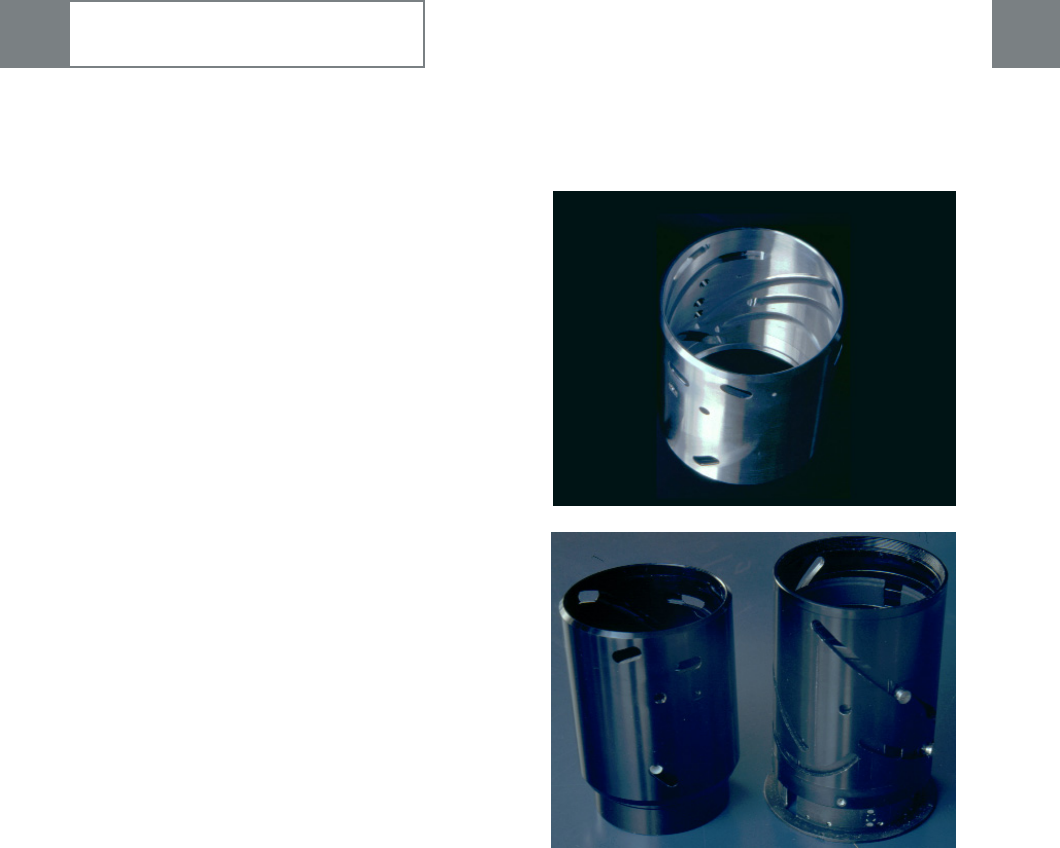
selected because the surface reacts quite well to the black
anodizing process
(see image 1)
.
The result of all this effort is a lens with a very smooth
movement of the focusing ring and focal length selection.
With quite sensitive fingers one can feel some instances of
friction when you go from 90 mm to 28 mm, so perfection
is always relative.
__Optical considerations
The general image quality of this lens is of a very high
order. Leica characterizes the lens as a travel and general
purpose lens. This is undoubtedly true, but I would add that
the performance of the LEICA VARIO-ELMARIT-R 28-90 MM
F/2.8-4.5 ASPH does support professional photography of
a very high calibre.
At 28 mm and full aperture (2.8) we have a high contrast
image that can record above 150 Lp/mm in the centre of
the image and more than 80 lp/mm in the outer zones
(see
image 2)
. Only the corners are weak with a soft recording
Chapter 7 Leica R-Lenses 4
allow the people at the assembly line to hand adjust the
compensator mechanism in such a way that the lens is
always at optimum performance. Every single lens is being
checked to perform as designed and especially the aspheri-
cal elements are very carefully adjusted. The result is a
much lower tolerance band than would normally be possi-
ble. The care that is being lavished on the quality of the
assembly can be read off from the time needed: it takes a
worker more than two hours to assemble the lens. This
close cooperation between design and assembly is one of
the main causes for the consistently high quality of the
Leica lenses and has now been brought to a new level. The
assembly and adjustment instructions are part of the final
lens design and the design is adapted to what is the best
assembly practice.
No two lenses that leave the factory are absolutely identi-
cal. There is always some tolerance during manufacture.
The factory must set the lower limits of the performance
that they can accept as being within the requirements as
specified by the designers. A long as these requirements
are met, a lens will be accepted by quality assurance. With
the construction of the LEICA VARIO-ELMARIT-R 28-90 MM
F/2.8-4.5 ASPH the statistical distribution within the tole-
rance range is significantly reduced.
Zoomlenses are difficult to manufacture to narrow toleran-
ces because of the lens groups that have to move in a com-
plicated path. Normally one uses a mount with guiding slots
that govern the movements of the lens groups in relation to
each other.
In most cases there are two or three slits and they are mil-
led in the mount as open holes, in which the guiding rollers
move. With open slits, however, the structural integrity of
the mount can suffer, but with two slits and sufficiently
thick walls, there is no problem. The price you have to pay
is a heavy lens. One of the requirements for the new lens
was its low weight. In this LEICA VARIO-ELMARIT-R 28-90
MM F/2.8-4.5 ASPH we have three moving groups and the-
refore three guiding grooves. Now we cannot use the nor-
mal construction. (too heavy and/or too fragile). To ensure
the necessary stability, one cannot use the open slit
method, but must use internal grooves that can only be cut
by special CNC machinery that Leica developed in coopera-
tion with Weller, the leading manufacturer of this type of
CNC tools. The milling movement creates a surface rough-
ness that has to be smoothed to a tolerance depth of 0.01
mm to ensure that the guiding rollers move with the same
resistance over the whole range. The mount of the new lens
is made of quite thin and very high-grade aluminium that is
specially selected to have the required stability. It is also
(image 1)












